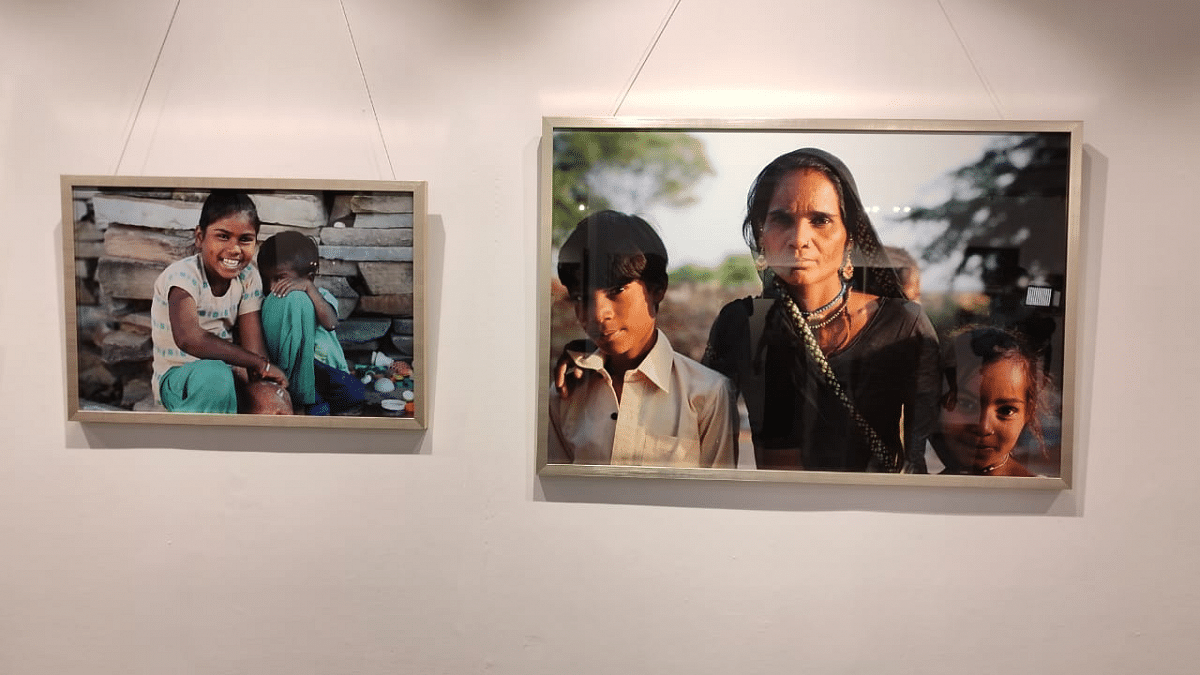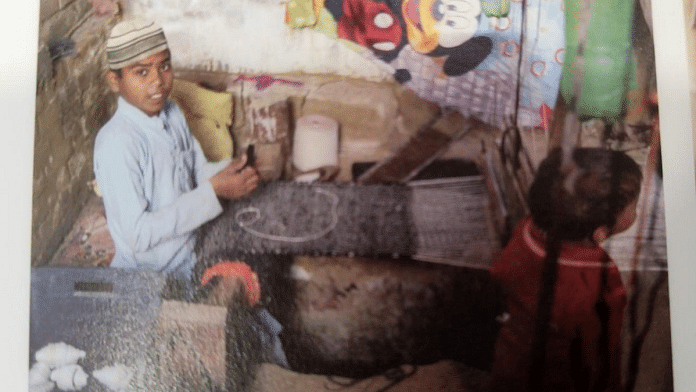New Delhi: A Mickey Mouse towel hangs over the child as he sits on the edge of a pit, weaving. But the innocent symbol of the cartoon character inside the frame barely covers his reality and more than 160 million others like him across the world who are just about holding on. But photographer Chitvan Gill hasn’t given up yet. Her exhibition Life in the Shadows—The Unseen Children of India’s Poor at the India International Centre is determined to keep their stories alive.
In the past two years, the Covid-19-induced economic slowdown and lockdowns pushed millions of children out of schools and forced them to work, often in deplorable and hazardous conditions. And Gill’s photographs, taken over a period of 3 months in 2021 across villages in Rajasthan, Madhya Pradesh, among others, document exactly this. From weaving and cotton ginning to brick kilns and stone cutting, informal industries continue to engage in child labour practices.
“These children work in such hazardous conditions that it really makes you question what’s wrong with the world that these children are forced to survive like this. What are their choices?” Gill said while talking about a village in Uttar Pradesh.

Also Read: Praveen Jain’s photo exhibition is a journey through India’s modern political history
Humanity and hostility
What truly stands out in Gill’s work is the sense of humanity with which she treats her subjects—the children and their families. Her photographs achieve a certain balance of retaining the dignity of the child workers, but also highlighting their deplorable conditions. Her work represents the contradictions in the lives of these children—innocence and impending danger. This juxtaposition is one of the many distinguishing themes of the series.
The absence and failure of the State are also evident across the pictures. “There’s no sense of the government, it’s just missing,” said Gill.

While India has several existing laws abolishing child labour, children across the country continue to suffer. “There exist certain loopholes in India’s child labour policies which exclude certain children from the law such as those working in households, child actors and more. These ambiguities need to be fixed in order for children to be better safeguarded in India,” said Insaf Nizam, an International Labour Organisation (ILO) specialist who inaugurated the exhibition.
Talking about what struck her the most while working on this series, Gill noted that there was a sense of hostility between the people trying to help these children and impose the law like government agencies and NGOs, and the villagers. Rather than creating a sense of mutual understanding and helping these children access schools, they’ve created an atmosphere of fear.
“Unless we address these root causes of child labour rather than simply treating its symptoms, this phenomenon will continue, endangering millions of children in the future,” Nizam added.
Also Read: Art meets design at this photography exhibition by Rohit Chawla
Breaking misconceptions
Through her work, Chitvan Gill also attempts to break misconceptions surrounding child labour such as parents’ absence of care and the consequent push for their children to work. “Such myths are simply not true. I’ve seen how these parents spoil their kids, provide for them to the best of their means and capabilities,” she said.
According to Nizam, apart from discussing issues like child labour institutionally in ILO and other policy spheres, it is also important to look at these issues in a social sphere. Media, photography and cultural exchanges, can help change attitudes.

This project was a collaboration between Work: No Child’s Business (WNCB) and Chitvan Gill. WNCB is an alliance committed to ensuring that children are free from child labour and enjoy their right to quality education and decent work in their future. Garima Kaur, In-country Lead of WNCB said, “It was during the International Year for the Elimination of Child Labour (2021) when we joined hands with Chitvan to showcase the intersectional and multilayered issues around child labour through the stories of these unseen children and their ecosystem. As an alliance (WNCB) committed to action for the elimination of child labour and this exhibition attempts to advocate for the same.”
Gill’s work is being exhibited at the Art Gallery at the India International Centre in Delhi from 1-14 July.
Sanjeev Bhargava, one of the many attendees of the exhibition said, “These photographs really touch your heart, the expressions on the faces of these children. In the social media realm today, photography is an essential medium through which such issues can be discussed and make a dent in the world.”
(Edited by Srinjoy Dey)



